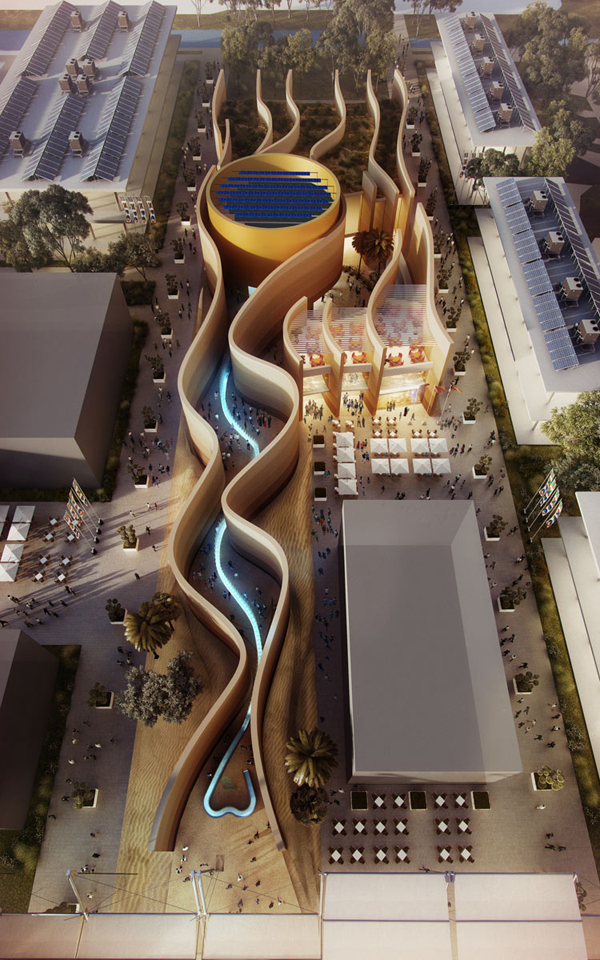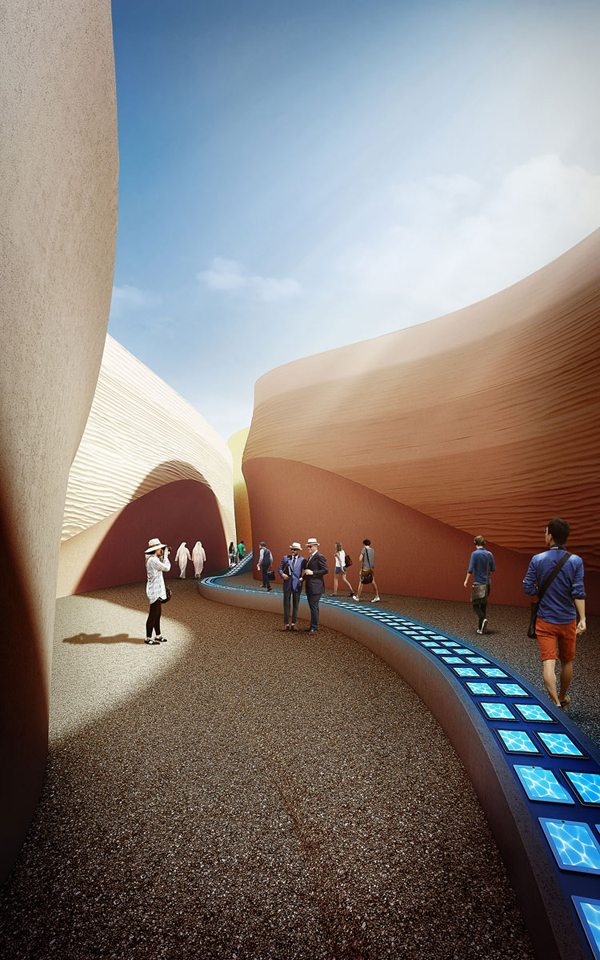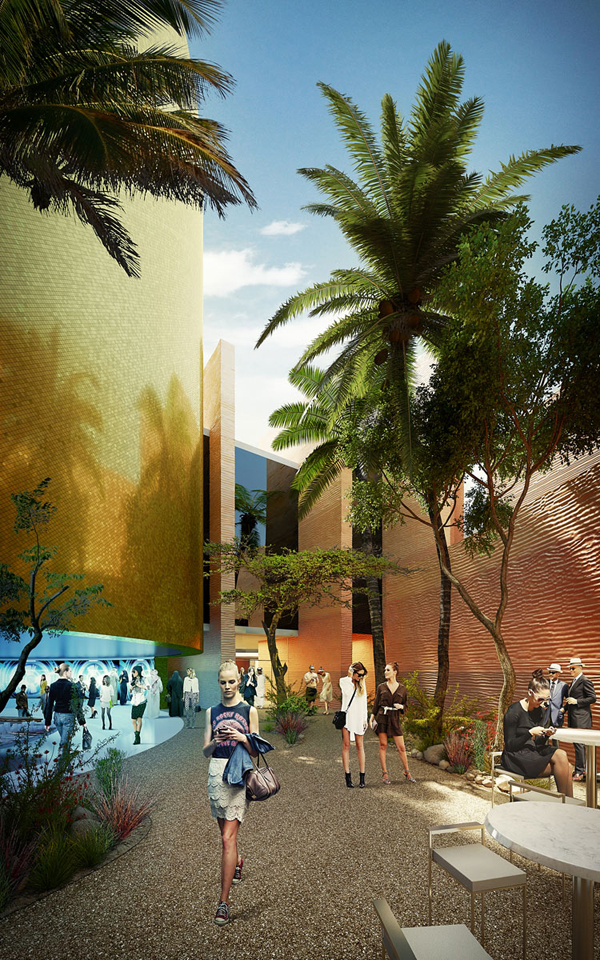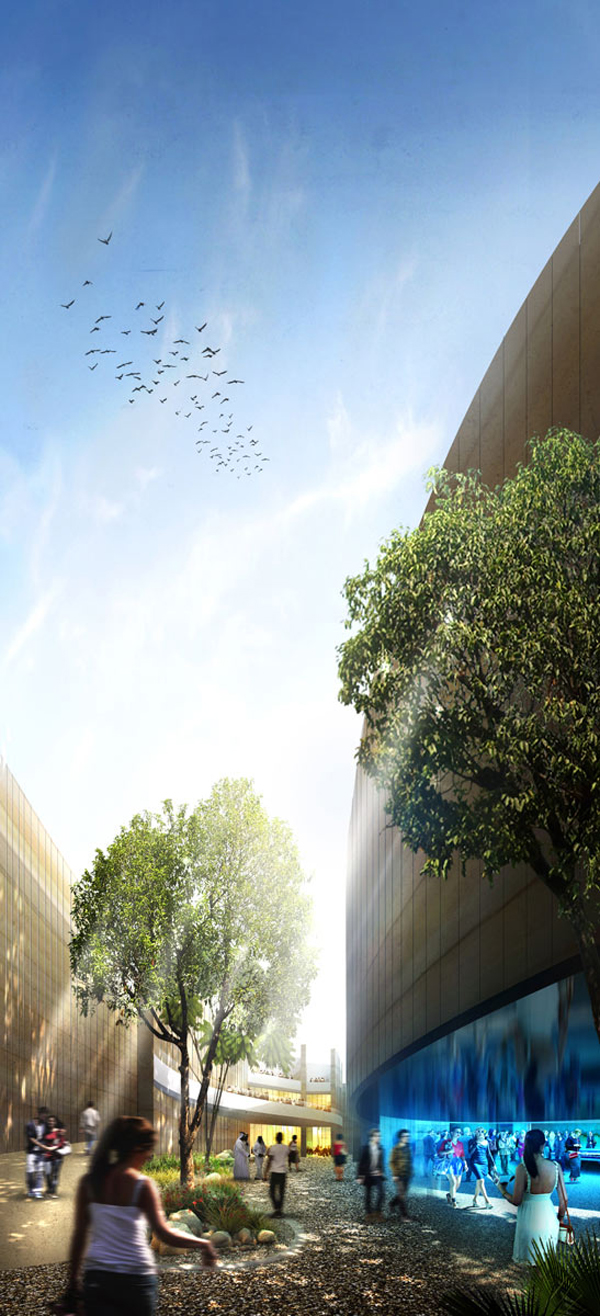National pavilion for the United Arab Emirates by Foster and Partners occupies a large site and is accessed via its main circulation axis – the decumanus. From here, visitors are drawn into the mouth of a canyon-like space, defined by two undulating 12-meter-high walls. Influenced by ancient planning principles, the pavilion’s interior evokes the narrow pedestrian streets and courtyards of the traditional desert city, and its contemporary reinterpretation in the sustainable Masdar master plan. The high walls continue through the 140 meter site in a series of parallel waves, unifying the visitor spaces within a dynamic formal language designed to convey the ridges and texture of sand dunes. A ramp leads gently upwards from the entrance towards the auditorium.
The irrigation aqueducts that have historically supported agriculture in the region are introduced in digital form. The path further leads to a state-of-the-art auditorium, contained within a drum at the heart of the site. After the screening, visitors follow a route through further interactive displays and digital talks, including a special exhibit celebrating Dubai as host city for the 2020 Expo. The pavilion responds to the Milan Expo’s theme of ‘feeding the planet’ by integrating a variety of dining options around the theme of modern Emirati food. The exhibition trail culminates in a green oasis leading into a ground level café, with a formal restaurant on the first floor and a hospitality roof terrace on top.
Conveying a unique sense of place, the landscaping around the pavilion is designed to evoke the UAE’s terrain and flora, while the texture of the walls derives from a scan of dunes and represents the different shades of sand across the Emirates. The design targets LEED ‘Platinum’ through a combination of passive principles and active techniques, from capturing rainwater on the roof garden to integrating photo-voltaic cells. Most significantly, the building is designed to be recycled – wall panels are supported by a steel frame, which can be easily disassembled and reconstructed for the pavilion’s eventual relocation in the UAE.



















